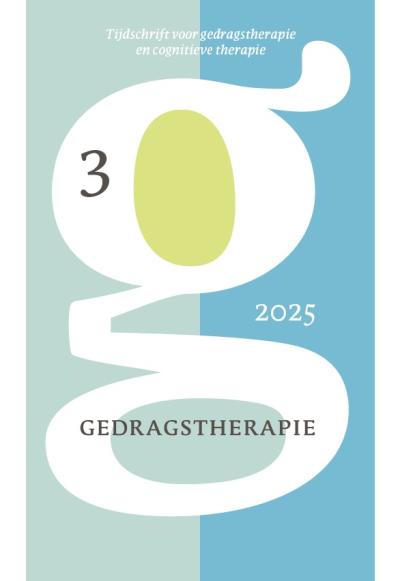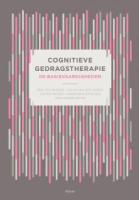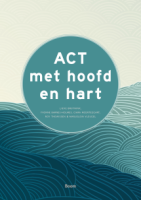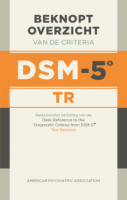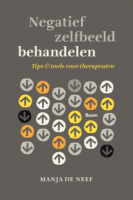Inhoud
Mate van werkgeheugenbelasting tijdens ‘recall’ en vervagen van herinneringen
Samenvatting
Oogbewegingen tijdens het denken aan emotionele herinneringen maakt deze herinneringen minder levendig/emotioneel. Volgens de werkgeheugentheorie komt dit doordat deze taken een competitie aangaan met beperkte werkgeheugencapaciteit. De theorie voorspelt dat elke duale-taak die het werkgeheugen belast herinneringen minder levendig/emotioneel maakt en er een omgekeerd U-verband is tussen de mate van werkgeheugenbelasting en heilzame effecten: grotere belasting leidt tot grotere effecten, maar extreem-belastende taken verhinderen het ophalen van herinneringen, wat de voordelen tegengaat. We gingen na of hoofdrekenen tijdens het ophalen van nare herinneringen helderheid/emotionaliteit vermindert, en werkgeheugenbelasting en verminderde helderheid/emotionaliteit de voorspelde kwadratische relatie vertonen. Deelnemers haalden een beeld op van het Koninginnedagdrama (1-3 maanden later), beoordeelden de helderheid/emotionaliteit en werden ingedeeld in één van de vier condities: alleen-ophalen of ophalen met ‘simpel', ‘gemiddeld' of ‘complex' hoofdrekenen. Daarna werden helderheid/emotionaliteit opnieuw beoordeeld. Hoofdrekenen verminderde de helderheid/emotionaliteit van herinneringen vergeleken met alleen-ophalen. Het omgekeerde U-verband gold voor emotionaliteit, niet voor helderheid.
Literatuur
- Andrade, J., Kavanagh, D., & Baddeley, A. (1997). Eye movements and visual imagery: A working memory approach to the treatment of post-traumatic stress disorder. British Journal of Clinical Psychology, 36, 209-223.
- Baddeley, A.D., (1998). Human memory: Theory and practice. Needham Heights, MA: Allyn & Bacon.
- Baddeley, A.D., & Andrade, J. (2000). Working memory and the vividness of imagery. Journal of Experimental Psychology: General, 129, 126-145.
- Barrowcliff, A.L., Gray, N.S., Freeman, T.C.A., & MacCulloch, M.J. (2004). Eye movements reduce the vividness, emotional valence and electrodermal arousal associated with negative autobiographical memories. Journal of Forensic Psychiatry and Psychology. 15, 325-345.
- Bisson, J.I., Ehlers, A., Matthews, R., Pilling, S., Richards, D., & Turner, S. (2007). Psychological treatments for chronic post-traumatic stress disorder: Systematic review and meta-analysis. British Journal of Psychiatry, 190, 97-104.
- Broeke, E. ten, Jongh, A. de, & Oppenheim, H. (2008). Praktijkboek EMDR: casusconceptualisatie en specifieke patiëntengroepen. Amsterdam: Harcourt publishers.
- Coffey, S.F., Gudmundsdottir, B., Beck, J.G., Palyo, S.A., & Miller, L. (2006). Screening for PTSD in motor vehicle accident survivors using the PSS-SR and IES. Journal of Traumatic Stress, 19, 119-128.
- Dienst Nationale Recherche van het Korps Landelijke Politiediensten (2009). Onderzoeksrapportage Koninginnedag 2009. Bevindingen van het rechercheonderzoek.
- Ehlers, A., Hackmann, A., Steil, R., Clohessy, S., Wenninger, K., & Heike, W. (2002). The nature of intrusive memories after trauma: The warning signal hypothesis. Behaviour Research and Therapy, 40, 995-1002.
- Engelhard, I.M., Arntz, A., & Hout, M.A. van den (2006). Ook angstpatiënten zonder PTSS hebben last van PTSS symptomen. Directieve Therapie, 26, 58-65.
- Engelhard, I.M., Arntz, A., & Hout, M.A. van den (2007). Low specificity of symptoms on the post-traumatic stress disorder (PTSD) symptom scale: a comparison of individuals with PTSD, individuals with other anxiety disorders, and individuals without psychopathology. British Journal of Clinical Psychology, 46, 449-456.
- Engelhard, I.M., & Hout M.A. van den (2010). Oogbewegingen verminderen de helderheid en emotionaliteit van "flashforwards". De Psycholoog, 45,10-18.
- Engelhard, I.M., Hout, M.A. van den, Arntz, A., & McNally, R.J. (2002). A longitudinal study of "Intrusion-based reasoning" and PTSD after a train disaster. Behaviour Research and Therapy, 40, 1415-24.
- Engelhard, I.M., Uijen, S.L. van, & Hout, M.A. van den (2010). The impact of working memory taxing on negative and positive memories. European Journal of Psychotraumatology, in druk.
- Foa, E.B., Riggs, D.S., Dancu, C.V., & Rothbaum, B.O. (1993). Reliability and validity of a brief instrument for assessing post-traumatic stress disorder. Journal of Traumatic Stress, 6, 459–473.
- Gunter, R.W. & Bodner, G.E. (2008). How eye movements affect unpleasant memories: Support for a working-memory account. Behaviour Research and Therapy, 46, 913-931.
- Harvey, A.G., Watkins, E., Mansell, W., & Shafran, R. (2004). Cognitive behavioural processes across psychological disorders: A transdiagnostic approach to research and treatment. Oxford: Oxford University Press.
- Hackmann, A., & Holmes, E. (2004). Reflecting on imagery: A clinical perspective and overview of the special issue of Memory on mental imagery and memory in psychopathology. Memory, 12, 389-402.
- Herbert, J.D., Lilienfeld, S.O., Lohr, J.M., Montgomery, R.W., O'Donohue, W.T., Rosen, G.M. et al. (2000). Science and pseudoscience in the development of eye movement desensitization and reprocessing: Implications for clinical psychology. Clinical Psychology Review, 20, 945-971.
- Holmes, E.A., James, E.L., Coode-Bate, T., & Deeprose, C. (2009). Can Playing the Computer Game "Tetris" Reduce the Build-Up of Flashbacks for Trauma? A Proposal from Cognitive Science. PLoS ONE, 4, e4153- doi:10.1371/journal.pone.0004153.
- Hout, M., van den, Muris, P., Salemink, E., & Kindt, M. (2001). Autobiographical memories become less vivid and emotional after eye movements. British Journal of Clinical Psychology, 40, 121-130.
- Hout, M.A., van den, Engelhard, I.M., Smeets, M.A.M., Hornsveld, H., Hoogeveen, E., Heer, E. de, & et al. (2010). Counting during recall: taxing of working memory and reduced vividness and emotionality of negative memories. Applied Cognitive Psychology, 24, 303-311.
- Isaacs, J.S. (2004). Numerical distraction therapy: Initial assessment of a treatment for posttraumatic stress disorder. Traumatology, 10, 39-54.
- Jongh, A. de, & Ten Broeke, E. (2003). Handboek EMDR: een geprotocolleerde behandelmethode voor de gevolgen van psychotrauma. Amsterdam: Harcourt publishers
- Kavanagh, D.J., Freese, S., Andrade, J., & May, J. (2001). Effects of visuospatial tasks on desensitization to emotive memories. British Journal of Clinical Psychology, 40, 267– 280.
- Kemps, E., & Tiggemann, M. (2007). Reducing the vividness and emotional impact of distressing autobiographical memories: The importance of modality specific interference. Memory, 15, 412-422.
- Kosslyn, S.M. (1994). Image and brain: The resolution of the imagery debate. Cambridge: MIT Press.
- Lee, C.W., & Cuijpers, P. (2010). A meta-analysis of the contribution of eye movements in processing emotional memories. Manuscript submitted for publication.
- Lee, C.W., & Drummond, P.D. (2008). Effects of eye movement versus therapist instructions on the processing of distressing memories. Journal of Anxiety Disorders, 22, 801-808.
- Lilley, S.A., Andrade, J., Turpin, G., Sabin-Farrell, R., & Holmes, E.A. (2009). Visuospatial working memory interference with recollections of trauma. British Journal of Clinical Psychology, 48, 309-321.
- Maxfield, L., Melnyk, W.T., & Hayman, C.A.G. (2008). A working memory explanation for the effects of eye movements in EMDR. Journal of EMDR Practice and Research, 2, 247-261.
- Minnen, A. van, & Artntz, A. (2004). Protocollaire behandeling van patiënten met een post-traumatische stress stoornis: Imaginaire exposure. In G.P.J. Keijsers, A. van Minnen & C.A.L. Hoogduin (Red.), Protocollaire behandelingen in de ambulante geestelijke gezondheidszorg II (2de herziene druk) (pp. 1-31). Houten: Bohn Stafle u Van Loghum.
- Muris, P., & Merckelbach, H. (1999). Traumatic memories, eye movements, phobia, and panic: A critical note on the proliferation of EMDR. Journal of Anxiety Disorders, 13, 209–223.
- Rothbaum, B.O., Meadows, E.A., Resick, P., & Foy, D. (2000). Cognitive-behavioral therapy. In E.B. Foa, T.M. Keane, & M.J. Friedman, Eds., Effective treatments for PTSD. Guildford Press.
- Shapiro, F. (2001). Eye movement desensitization and reprocessing: Basic principles, protocols, and procedures. New York: Guilford Press.
- Smith, E.E., & Kosslyn, S.M. (2006). Cognitive Psychology. Mind and Brain. New Jersey, Pearson/Prentice Hall.
- Stichting KijkOnderzoek (2009). Persbericht Kijkcijfers: Common Currency April 2009. Amstelveen: SKO.
 © 2009-2025 Uitgeverij Boom Amsterdam
© 2009-2025 Uitgeverij Boom Amsterdam
De artikelen uit de (online)tijdschriften van Uitgeverij Boom zijn auteursrechtelijk beschermd. U kunt er natuurlijk uit citeren (voorzien van een bronvermelding) maar voor reproductie in welke vorm dan ook moet toestemming aan de uitgever worden gevraagd:
Behoudens de in of krachtens de Auteurswet van 1912 gestelde uitzonderingen mag niets uit deze uitgave worden verveelvoudigd, opgeslagen in een geautomatiseerd gegevensbestand, of openbaar gemaakt, in enige vorm of op enige wijze, hetzij elektronisch, mechanisch door fotokopieën, opnamen of enig andere manier, zonder voorafgaande schriftelijke toestemming van de uitgever.
Voor zover het maken van kopieën uit deze uitgave is toegestaan op grond van artikelen 16h t/m 16m Auteurswet 1912 jo. Besluit van 27 november 2002, Stb 575, dient men de daarvoor wettelijk verschuldigde vergoeding te voldoen aan de Stichting Reprorecht te Hoofddorp (postbus 3060, 2130 KB, www.reprorecht.nl) of contact op te nemen met de uitgever voor het treffen van een rechtstreekse regeling in de zin van art. 16l, vijfde lid, Auteurswet 1912.
Voor het overnemen van gedeelte(n) uit deze uitgave in bloemlezingen, readers en andere compilatiewerken (artikel 16, Auteurswet 1912) kan men zich wenden tot de Stichting PRO (Stichting Publicatie- en Reproductierechten, postbus 3060, 2130 KB Hoofddorp, www.cedar.nl/pro).
No part of this book may be reproduced in any way whatsoever without the written permission of the publisher.
Inloggen VGCt en VVGT
Leden van de VGCt en de VVGT loggen in via de site van hun vereniging. Als u op die site bent ingelogd als lid, vindt u daar een button naar het Tijdschrift voor Gedragstherapie.
English
Behavioral Therapy: Journal for Behavioral Therapy and Cognitive Therapy ISSN 0167-7454
Information in English can be found here.



